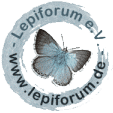

 +1Kontinente:AS
+1Kontinente:AS3. Weitere Informationen
3.1. Etymologie (Namenserklärung)
Verstehen sie die Herkunft des Artepithetons von selbst ? Dann sind sie vermutlich Ukrainer. Yepishin (2022: 299) erläutert: "Palianytsia (in Ukrainian: Паляниця) is a type of Ukrainian bread. Pronunciation of the word “palianytsia” was used to test enemies who were unable to pronounce the given word correctly, during a full-scale invasion of Russian troops, in the Russo-Ukrainian War."
3.2. Taxonomie und Faunistik
Roesler (1973) hatte in der Beschreibung seiner "Staudingeria monella" - jetzt Ancylosis monella - außer dem Holotypus aus Polichromi in Nord-Afghanistan noch 24 Paratypen aus dem Iran und Afghanistan erwähnt. Yepishin (2022) studierte dieses Typenmaterial und stellte dabei fest, dass darin noch 5 Exemplare einer zweiten, bisher unbeschriebenen Art steckten. Die neue Art unterscheidet sich genitaliter in beiden Geschlechtern deutlich von A. monella und anderen ähnlichen Arten. Roesler (1973) hatte die kleinen Unterschiede gegenüber echten Ancylosis monella in den äußeren Merkmalen noch im Rahmen innerartlicher Variabilität interpretiert und daher auf eine Genitaluntersuchung verzichtet.
3.3. Faunistik
Die Art ist bisher nur durch die 5 Typusexemplare aus dem Osten Afghanistans bekannt.
3.4. Typenmaterial
Yepishin (2022: 294-295) schreibt: "Type material (stored in the SMNK). Holotype: 1♂ (Figs 1, 10, 12a–f), “[round label with yellow edge] Para- | type”, “O—Afghanistan | Sarobi, 1100 m | 13.8.1961 | G. Ebert leg.”, “[yellow label] Staudingeria | monella | U. Roesler / Paratypus”; prep. no. ♂630.22s V. Yepishin." Die Paratypen stammen aus Gulbahar und Sarobi, also alle aus dem Osten Afghanistans: "Paratypes: 1♂ (Figs 2, 11a–d), “[round label with yellow edge] Para- | type”, “O.—AFGHANISTAN | Gulbahar 1700 m | 15.8.1956 | H. G. Amsel leg.”, “[yellow label] Staudingeria | monella | U. Roesler / Paratypus”, “[reddish label] Gemalt von | Dr. F. Gregor | für Micr. Pal.”; prep. no. ♂631.22s V. Yepishin; 1♂ (Figs 3, 7, 13a–b), “[round label with yellow edge] Para- | type”, “O.—AFGHANISTAN | Gulbahar 1700 m | 15.8.1956 | H. G. Amsel leg.”, “[yellow label] Staudingeria | monella | U. Roesler / Paratypus”; prep. no. ♂632.22g V. Yepishin; 1♀ (Figs 4, 9, 14), “[round label with yellow edge] Para- | type”, “O.—AFGHANISTAN | Gulbahar 1700 m | 15.8.1956 | H. G. Amsel leg.”, “[yellow label] Staudingeria | monella | U. Roesler / Paratypus”; prep. no. ♀341.20s V. Yepishin; 1♀ (Figs 5–6, 15), “[round label with yellow edge] Para- | type”, “O—Afghanistan | Sarobi, 1100 m | 13.8.1961 | G. Ebert leg.”, “[yellow label] Staudingeria | monella | U. Roesler / Paratypus”; prep. no. ♀629.22s V. Yepishin."
(Autor: Erwin Rennwald)
3.5. Literatur
- Roesler, R. U. (1973): Phycitinae. — Microlepidoptera Palaearctica 4: I-XVI, 1-752, Tafelband 1-137, pl. 1-170. Wien (Verlag Georg Fromme & Co).
- Erstbeschreibung: Yepishin, V. (2022): An undescribed species among Roesler’s type specimens: Ancylosis palianytsia sp. nov. (Lepidoptera: Pyralidae: Phycitinae) described from Afghanistan. — Zootaxa, 5133 (2): 293–300. [zum PDF-Download auf researchgate.net]



